Having an original Pashmina is a cherished dream of all women across borders, ethnicities, ages, and cultures. For a long period, the exceptional artistry, hand spinning, and weaving of local Kashmiri craftsmen have displayed a manifestation of sophistication in making it beautiful.
Such is the magic of elegant and resplendent pashmina that they have become a style statement and definition of classy for elite women. They have marked their way into the closets of locals of the valley to the mighty and richest people of the world.
One of the biggest doubts that came across would be ‘Is it a real and genuine one and how to tell it is real or fake? This concern is absolutely valid since many affluent and powerful mill owners have overtaken the adroit artistry of craftsmen to make machine-made lookalikes. These replicas look exactly like the real ones. But even though salt looks like sugar, it is not sugar. And only those who can identify the difference between the two are the real gainers. Now when it comes to salt and sugar, it is easy to tell the difference. Identifying a fake one is not that easy.
We are going to make this simple for you. But before there is a need to discuss how fine Cashmere wool is procured and crafted in Kashmir by the process of Pashmina Craft.
Procuring the finest Cashmere
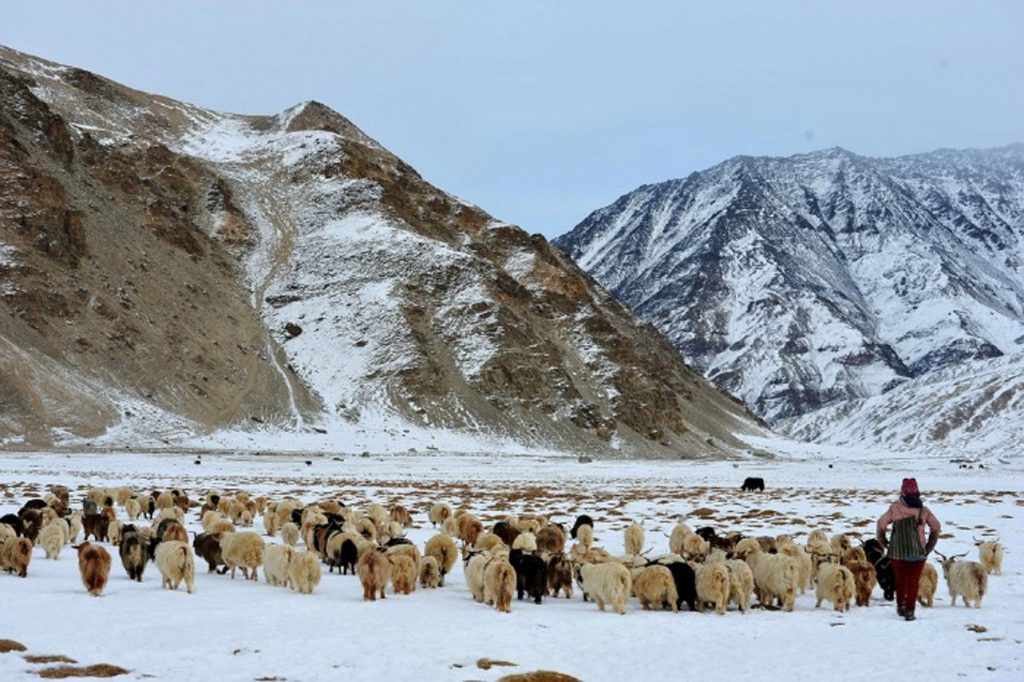
The finest Cashmere is procured from Changra goats which are the dwellers of habitat in Changhthanghi. The climate in Changhthanghi is very harsh during the winter season. It goes to about -50 degrees Celsius. The goats develop a thick wool under their bellies, over the ears and behind the neck. This wool i softest and finest. It is called Cashmere wool. Eventually, spring comes with its blooming bliss of breezes. Therefore, the goats shed off the excess wool against rocks and trees. Additionally, the Changpa herders manually comb out the excess wool with high ethical practices.
Once the raw cashmere is packed, the diligence of procuring process is seen all across the raw Cashmere wool. The beauty of this Cashmere wool lies in its rarity as the production is highly low because the species of goats is quite rare. Moreover, the developing of wool is seasonal and once a year production.
Craft of Pashmina
The craft begins when the raw Cashmere wool reaches the valley of Kashmir. The local cleaners thoroughly clean the Cashmere wool and further sort it and dry it out. Afterwards, the sorted Cashmere is handed over to women of the valley for the Art of Spinning. Women spun the Cashmere wool on yinder or the wooden spinning wheel with high diligence and sophistication.
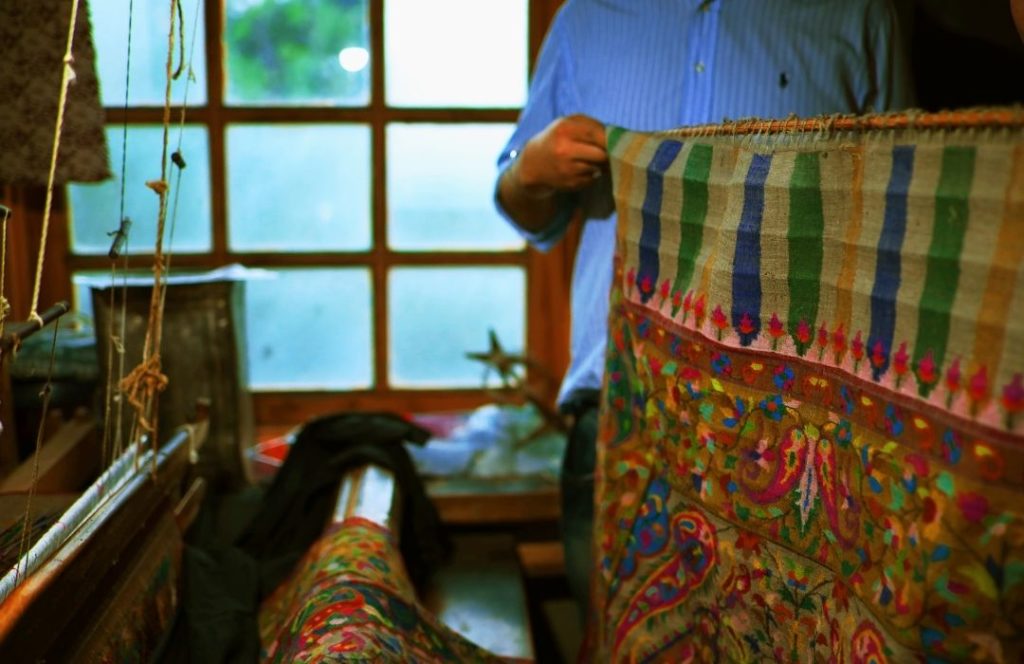
Master weavers weave the fine Cashmere yarns to rich Cashmere fabric om a handloom of Kashmir set up at workshops/ karkhanas. Further, many shawls are adorned with intricate hand stitching, a laborious technique used by artisans to produce stunning patterns. Therefore, often inspired by the natural world, such as flowers, vines, and paisleys. As a result, cashmere became a masterpiece that combined exquisite beauty with functionality. Consequently, it surpasses the dignity of plain attire.
From the hands of Kashmiri artisans to the rough, windswept grasslands of Ladakh. Pashmina's journey thus represents the harmonious coexistence of nature and craftsmanship. This exquisite fabric endures and is revered globally. delivers a small taste of Kashmir's soul to those who appreciate its history and beauty.
Also read: Craft of Pashmina – A Living Heritage of Kashmir
How to identify?
Read on and get an insight on, how to identify a real Pashmina?
1. The burn test
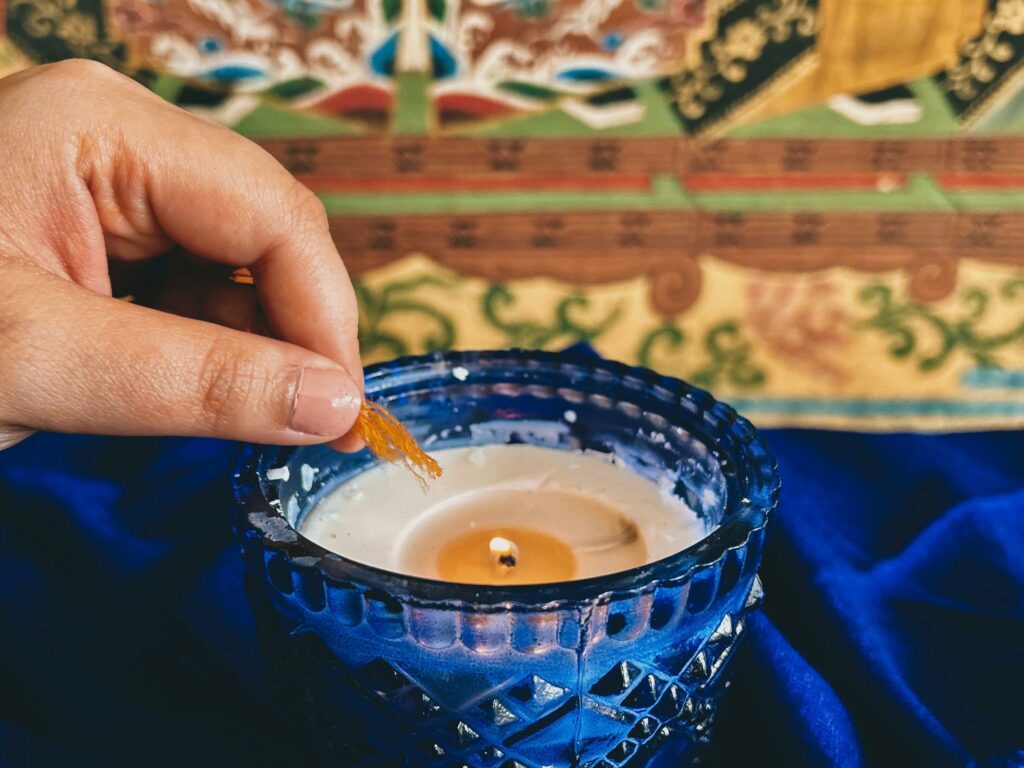
Well, we do understand that you would not want to spoil the shawl. But picking up one thread from the fringes would not harm or ruin the fabric and is sufficient for the burn test.
All you have to do is take the thread and place it on a plate and burn it. Smell the odor of the burnt fabric and check the ashes carefully with fingertips.
If you get burnt hair smell and the ash turns out to be like a powdery substance, it is likely to be real. Pashmina is made from real, natural hair, and therefore burning the same should give burnt hair smell.
Another thing to note is that in spite of the burning, a real material feels matte, quite similar to what it was before burning. If it feels like viscose, you know it is a fake product. This test is used by many vendors to check the authenticity of Pashmina Shawls.
2. As mentioned above, even the burnt Pashmina material feels like matte
Matte is a characteristic of real Pashmina. Though a little sheen is possible in Pashmina, they mostly carry a matte appearance. If there is a lot of sheen on the fabric, you can put the shawl back to the counter.
3. The reality details lie in its diameter
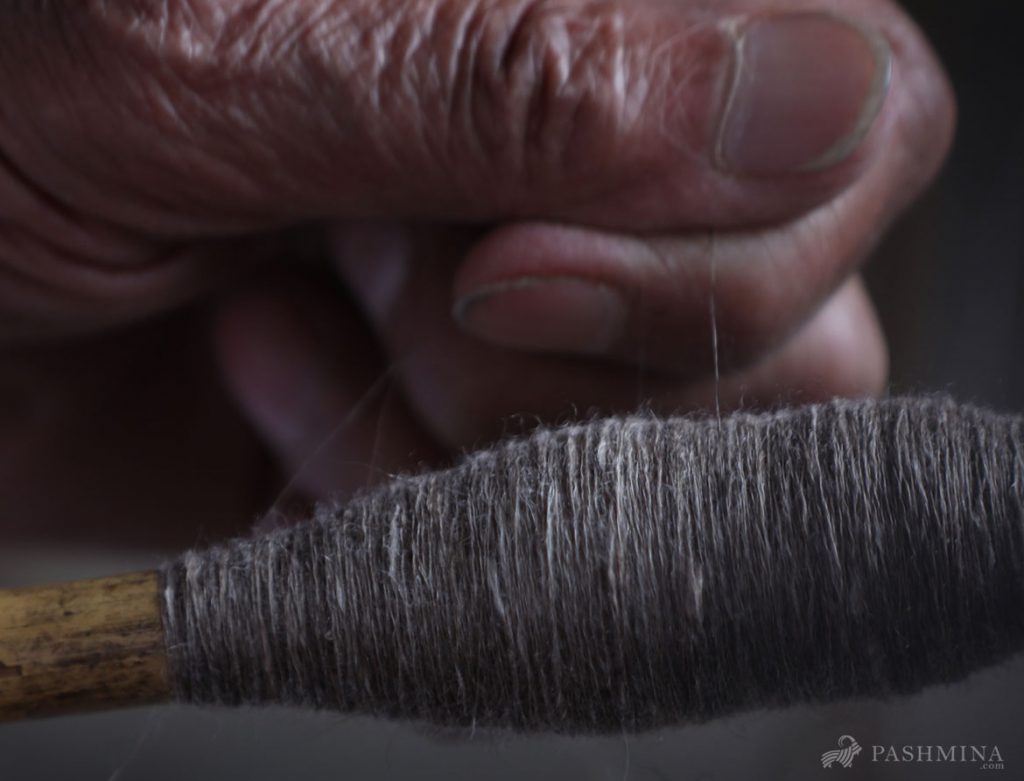
Hard to believe? We agree but trust us when we say that the diameter details of a Pashmina are a good indicator of its authenticity.
The best varieties are available for 14 to 15.5 microns. Do not invest your money if it is above 19 microns. When it comes to a better quality of Pashmina, lower the micron count softer and lighter will be the item.
4. The weave gives an answer to your doubts on its genuineness
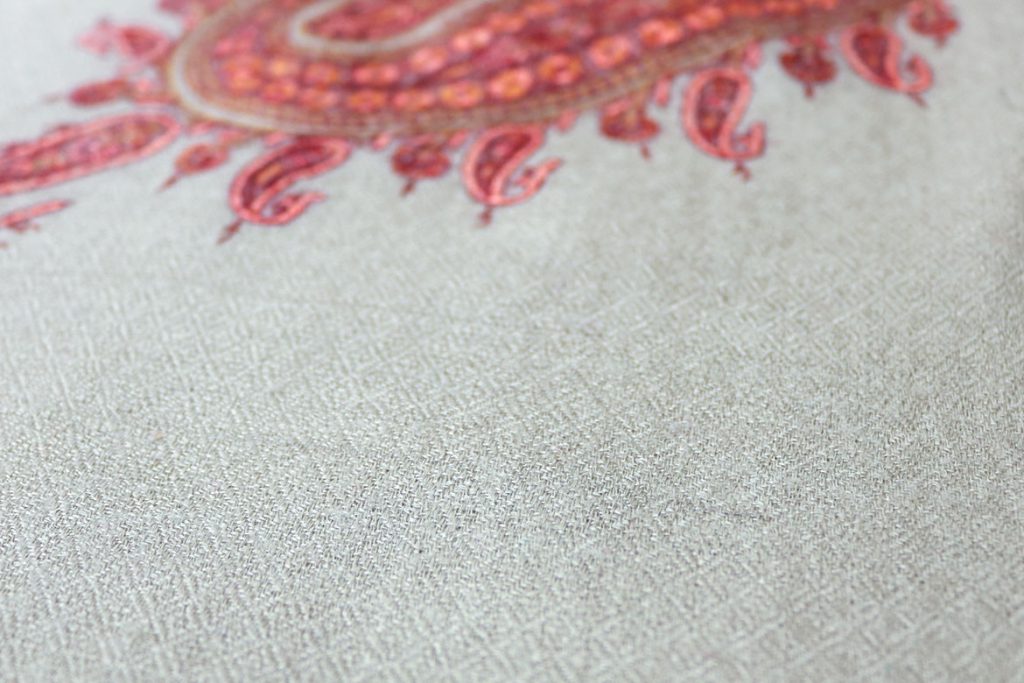
If you carefully check the weave against the light, you can see an irregular weave. Pure pashmina is woven on a handloom and hence will always have an irregular weave. These irregularities are a mark of real Pashmina products.
5. The rubbing test
Rubbing the fabric might sound a little odd, but if you understand the fundamentals of rubbing, you can use this test to decide if the shawl is indeed made of animal fiber or not.
Polyester or acrylic fiber accumulate static electricity within. Rubbing any polyester or fiber material would generate little sparks. If the shawl you are testing is producing tiny sparks upon rubbing, then it is not real one. You will also notice that tiny objects and dust are attracted to it.
6. Glue fixes everything. Doesn’t it?
Well, it can also fix your doubt regarding real or fake Pashmina. If you see a label or tag glued, do not waste your time or money on it because it is a fake one.
One can never stick a thing on a genuine Pashmina with glue as glue cannot hold the label or tag for long. Therefore, you need to stitch the tags in the real one.
7. You can also do a wiggle test on the Pashmina
Place the shawl between your thumb and index finger and wiggle your fingers. Do you see a wiggly mark? If yes, then the shawl you are considering is acrylic.
8. Not everything that shines is beautiful
The same principle can be applied to authentic Pashmina. Since it doesn’t have a shine of its own, there is no reason you give a glowy and glittery appearance, unless some silk fabric is added to it; which in any case would make it a fake product.
9. Microscopic tests
Using transmitted light under a microscope, an authentic would show block-shaped patterns linked close to one another. If the fiber looks like simple shape placed at an extended distance, then it is certainly not a genuine.
10. Dimensions are extremely important
The standard dimension for Pashmina is 36/80 inches. Higher the dimensions, the steeper the cost. So, if someone sells a standard or higher dimension to you, there are chances of the product being an unauthentic one. If you come across someone who is selling at far below the market rates, it is too good to be a true scenario.
11. We don’t like pilling on our clothes
It is quite a nuisance and hence good products should not have pilling. If you believe in this and are looking for a Pashmina product that guarantees no-pilling, you are certainly going for a fake one. Pilling is a quintessential feature with an animal fiber material. If there is no pilling on the shawl, then probably what you have in your hand is a synthetic product.
By now you must be thinking it is very difficult to choose a real pashmina shawl.
Not really, we would say. These tests and a little common sense comes extremely handy in finding a real product.
Now that you have all it takes to differentiate between real and fake Pashmina, you have one more reason to treasure your heart with the snugly embrace of an authentic and pure, made by love, exclusively for you! at our platform pashmina.com.
Also read: Pashmina in the Hymns of a Kashmiri wedding